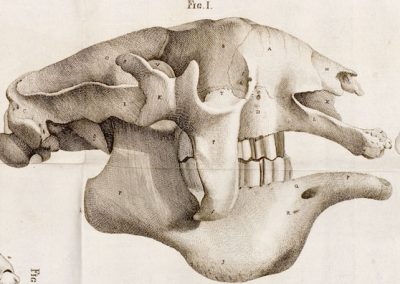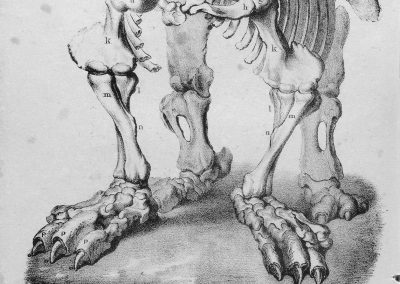The Megatherium specimen held in the National Museum of Natural Sciences in Madrid is the world’s first museal reconstruction of a large extinct vertebrate. In 1787 a Dominican friar named Manuel de Torres unearthed along the banks of a small affluent of the River Plate the fossil bones of a strange animal of great dimensions, a ‘wonder and providence of the Lord.’ The remains were packed in 7 boxes and shipped to the Royal Cabinet of Natural History in Madrid. Once unpacked, Juan Bautista Bru, the cabinet’s taxidermist and painter, mounted and drew the specimen so that it could be viewed in person and virtually. One of the remote viewers was the young Georges Cuvier, who upon examining copies of Bru’s drawings in Paris resolved the mystery of its identity. He called it Megatherium, ‘the great beast,’ a giant and extinct sloth. For years, its strange anatomy served different theories: some employed the great beast to defend American nature from its European critics, others to illustrate transformationalist theories, while others found in its ‘egregious monstrosity’ evidence for the existence of God.







